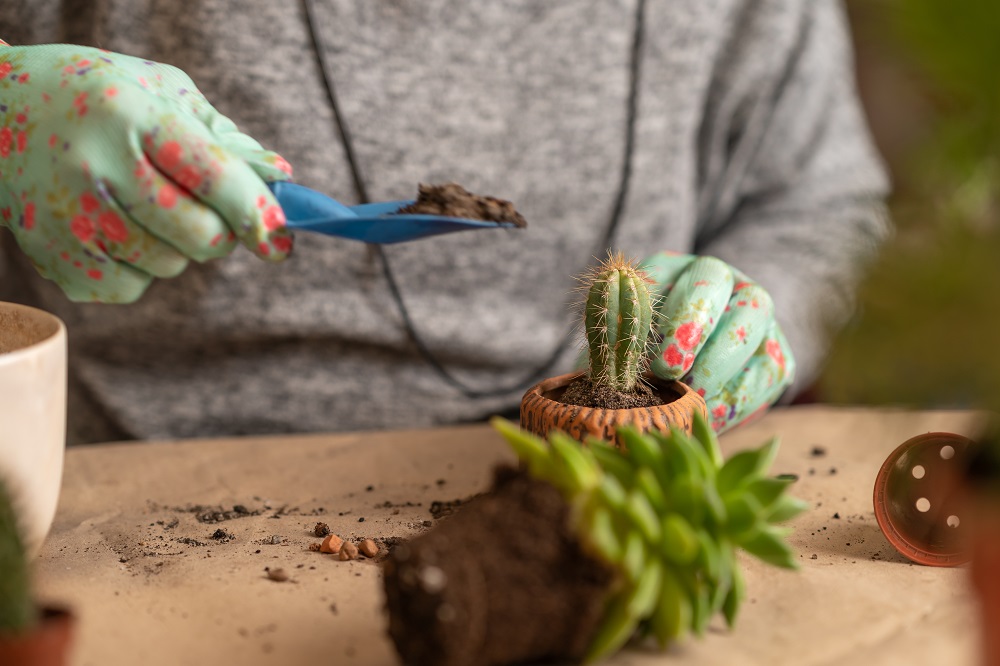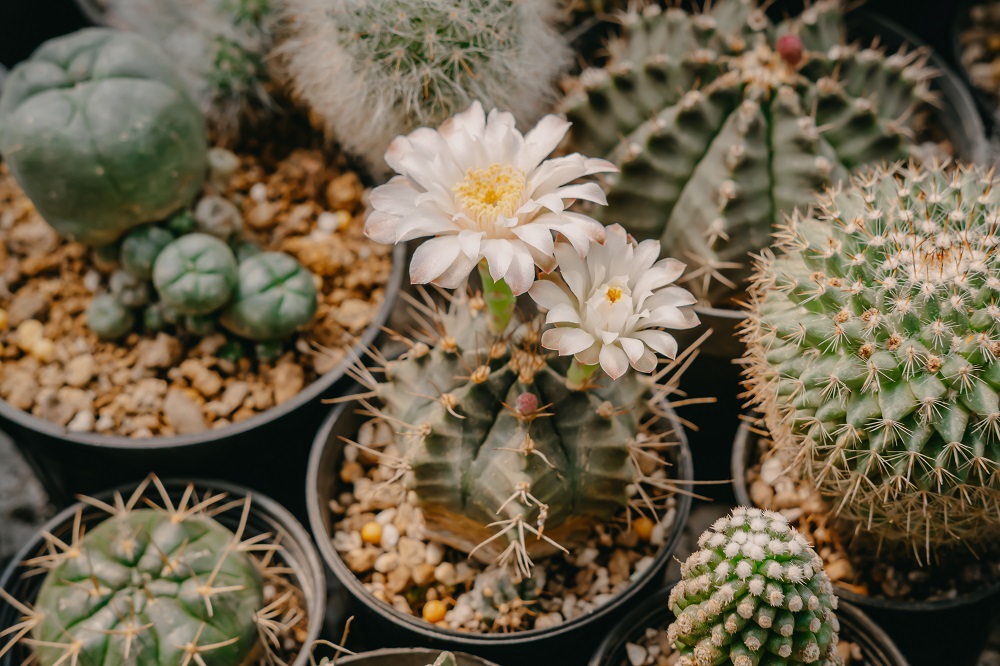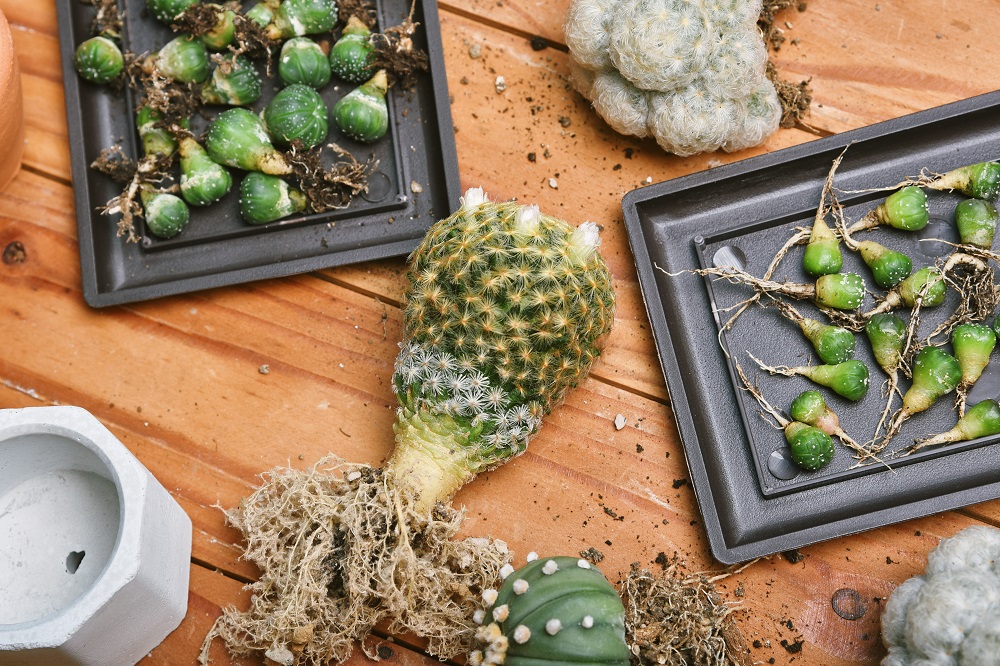Do you want to foster an Easter Lily Cactus? Here are the things you should keep in mind to have it grow healthy and happy!
As you probably read, I am a huge fan of cacti. I already own 10, and honestly, I plan on getting 5 more this year. They’re easy to take care of; their flowers bloom so gorgeously that even when I am on my worst days, these tiny, thorny beings manage to make me smile.
My latest acquisition is an Easter lily cactus, a type of cactus that is an easy-care plant that is suitable for beginners because it is an adaptable species that requires little care to flourish.
An Easter lily cactus may give you an early-season bloom each year if you take good care of it and place it in the right spot in your house. When fully grown, the Easter lily cactus only reaches a height of one foot (0.3 meters).
The plant’s body is a small, rounded mass with many ribs surrounding the main body. It bears sweet-smelling, funnel-shaped flowers in the early season. The plant isn’t poisonous but because it has sharp thorns if you have pets or small kids it’s better to place it somewhere out of reach.
Without further ado, let’s get to the part where I walk you through the process of caring for this plant.

Repotting the plant
So, I somehow convinced you to buy one for yourself and got home with the baby Easter lily cactus. Now what to do? Well, before thinking about where to put it, because that’s super important too, I recommend doing a repot. Why? In most cases, the vase is already too small for the plant to grow, plus most of them aren’t made of durable materials either.
Gather your supplies: a new pot, a pair of gloves because yes it will sting, especially in the beginning when the baby plant doesn’t know you, a medium-sized pot, cactus or succulent potting mix, a tiny shovel, or if you don’t have one, your hands are just fine too, a brush to clean the mess from the pot afterward, and finally, some room temperature water to add it to the plant.
To loosen the soil, put on gloves, tilt the pot gently, and tap the sides. If the cactus is difficult to remove, carefully lift it from the base with a shovel.
Old soil should be shaken off or gently brushed away from the roots. Before repotting, even if the plant is small, check for pests or rot in the roots. Use sterile scissors to trim any damaged roots you find.
Remember: every two to three years, Easter Lily Cacti should be repotted to give them more space to grow and replenish the soil!
Be mindful of the soil
Selecting the proper soil is one of the most important factors in growing an Easter lily cactus correctly. The Easter Lily Cactus, like most cacti, needs soil that drains properly to prevent waterlogging, which can cause root rot. The ideal mix is one made especially for cacti or succulents because it is light, sandy, and drains rapidly.
I recommend the Cactus and Succulent Mix 8 qt Bag from Tank’s; it’s a brand that I have appreciated very much since I got my first cacti, and I watched it grow happily and healthily with the help of this soil mix.
When creating your cactus soil mix, consider mixing the following ingredients: One part coarse sand, two parts potting soil, and one part pumice or perlite (for drainage).
This will produce the perfect ratio of drainage to moisture retention. To avoid any water pooling at the bottom, make sure the pot you use for your cactus has drainage holes.
Place it in a sunny spot
Southern Brazil, Bolivia, Uruguay, Argentina, and Paraguay are the native habitats of the Easter lily cactus. So, as you may assume, it gets plenty of sunlight all year round in these climates.
Therefore, your cactus should be placed near a window (less than 1ft) facing south or west in the house, slightly out of the direct sunlight. Use a plant light to enhance the bright exposure it receives if the amount of light in your house is not enough. Place the plant where it receives at least 8 hours of sunlight each day if you plan to move it outside during the summer season.
TIP: If your Easter lily cactus is small, it should ideally receive at least 6 hours of sunlight per day, but more is better for healthy growth.
Watering rules for the Easter Lily cactus
A common belief is that cacti can withstand drought. The Easter lily cactus is no different, but it will grow most effectively if it is kept at a moderate moisture level. The plant will experience root problems if the soil is too wet, as is the case with most desert plants.
To give the soil enough time to dry between waterings, the Easter lily cactus should ideally be watered once every three weeks. Make sure there are lots of holes in the pot, that the soil used for potting drains well, and that you can feel when the soil is dry. Water the soil thoroughly when it feels dry to the touch, and then stop until it dries out once more.
From one plant mom to another, I don’t recommend watering your cactuses with tap water; go for bottled water. However, if you insist on doing that, at least use a water filter. I got mine from Amazon, it’s this one PUR PLUS Vertical Faucet Mount compatible with any sink faucet and it costs $21.
Important: Water can cause rot on the cactus itself, so keep it away from the thorns in particular!

Temperature and humidity conditions
The natural desert environment of Easter Lily Cacti is defined by warm temperatures and low humidity levels. That’s why the ideal temperature range is between 20 and 109 degrees Fahrenheit.
Because of its resilience, the plant can tolerate both significant heat and mild cold. However, extra caution is needed during severe weather. Overheating can result in root rot or sunburn, while freezing temperatures can cause the Easter lily cactus to show symptoms of frost damage, such as blackened tissue.
To lessen these effects, it’s critical to provide insulation, such as mulching, or relocate the plant to a warmer location during cold snaps. Additionally, make sure the Easter lily cactus receives enough shade and water during periods of extreme heat to ensure that it thrives in a variety of environments.
I advise keeping your cactus away from areas that are subject to drafts or drastic temperature swings, like those that are close to heaters or air conditioners. Make sure there is enough airflow around your cacti because too much humidity can lead to rot, and while cactuses are pretty sturdy, I don’t recommend solving this issue because you may not.
To fertilize, or to not fertilize?
Due to their natural adaptation to low-nutrient soils, cacti don’t require a lot of fertilizer. However, Easter lily cacti do best when fed a diluted liquid of a balanced houseplant food or cactus formula from late winter to early spring. Don’t forget to cut it in half!
When your cactus is growing, which is usually in the spring and summer, it’s the best time to fertilize it. The cactus goes into a dormant phase in the fall and winter, so fertilization should be avoided as it may make the plant weak or overly lanky.
Make use of a water-soluble fertilizer that is balanced and designed for succulents and cacti. To encourage blooming and root development, these fertilizers typically have higher potassium and phosphorus contents. A diluted 10-10-10 liquid fertilizer can also be used, but be sure to carefully follow the manufacturer’s instructions.
During the growing season, fertilizer should be applied once a month. To avoid root burn, always water the cactus before fertilizing it.
Are pests and diseases something common for cacti?
If indoor plants are given the proper soil, enough light, and not too much water, they rarely have any issues. Root rot is caused by soggy soil. Scale, mealybugs, and other pests may infest your plant if you decide to move it outside in the summer. The most common causes of fungal diseases are poor soil drainage and excessive watering.
But in case your little Easter Lily cactus faces issues with spider mites, check for yellowing of the cactus skin and webbing. Infestations can be managed by applying neem oil or insecticidal soap.
If mealybugs are the issue then I recommend removing them manually with a cotton swab dipped in rubbing alcohol paying a little more attention to the thorns again.
Pruning
With a collection of cactuses on my balcony and a pretty big Monstera that I have to prune carefully before winter when I don’t have to prune one or two plants, comes a reward. For example, pruning is not necessary for the Easter lily cactus. When the flower is spent, it will fall off naturally, or you can manually pluck it off.

How to propagate Easter lily cactus?
Spring and early summer are the ideal seasons for Easter lily cactus cutting propagation. Warmer temperatures and ideal light levels are available during this time, which are essential for promoting root growth.
By taking advantage of the Easter lily cactus’s strong growth phase during these seasons, these circumstances aid cuttings in establishing more successfully.
You’ll need a couple of tools to make the process of propagation smooth: pruning shears, sterile potting mix, rooting hormone powder or gel, small pots or trays, and some plastic wrap.
Pruning shears guarantee a clean cut with less damage to the plant tissues, which can speed up healing and lower the risk of infection. The likelihood that roots will grow on a cutting increases with its cleanliness. To promote root development and shorten the time needed for rooting, apply to the Easter lily cactus’ cut end after cutting.
After you cut the tiny babies from the Easter lily cactus, before putting them in different pots, make sure you use a mix made especially for cacti, which typically consists of materials like sand or perlite, guaranteeing proper air circulation and drainage to stop the rot.
There is one more thing before storing the pots away: to ensure high humidity surrounding the Easter lily cactus cuttings, which is essential during the early phases of root development, cover them with plastic wrap.
To moisten the soil, lightly water the planted cutting. Steer clear of overwatering, as this may encourage rot. Until you notice new growth, which indicates root development, continue to water sparingly.
I bought it, I took care of it and now it doesn’t bloom. What can I do?
With proper care, an Easter lily cactus will bloom once a year, but you have to be patient for sure. The bloom lasts for just a couple of days before dying. It’s a brief but memorable moment that teaches us to stop, value, and enjoy the here and now. So, while it’s in full bloom, be sure to take some photos as well. By the time the next blooming season arrives, you’ll want something to remember.
Every year, it blooms in the early spring. For those who don’t know, the Easter lily cactus has a light, sweet perfume. The Easter Lily Cactus becomes a showstopper at night. Under the moon’s light, its blossoms open up, providing a nighttime display that can spark interest and discussion.
Living up to its name, this gorgeous cactus’s spectacular blooms coincide with Easter. This cactus creates a distinctive floral arrangement that is sure to make a statement, whether it is used to decorate an Easter brunch table or to add a bit of nature to a themed party.
Ask your family members and friends who attend the celebration if they would like to have baby cacti for themselves as well since propagation time is almost here.
Does the Easter Lily Cactus have fruits?
The majority of the Easter lily cactus’s fruits are edible. When the fruit is red, pick it. Verify the species with professionals to prevent problems with food safety. To harvest, put on gloves or use tools like scissors.
That’s it! I hope this step-by-step guide was friendly and easy to understand and you’re already confident you’re going to be a good parent for your future cacti.
Bottom line:
The Easter Lily Cactus is a simple and satisfying companion, regardless of your level of experience with succulents. Your cactus will prosper for many years with proper care, surprising you with its hardiness and blooms now and then.
Therefore, savor the moment while caring for your Easter Lily Cactus. Watch it grow, evolve, and ultimately bloom—much like life, it embodies patience, persistence, and a wealth of surprising beauty.
The process of caring for an Easter Lily Cactus is simple, but it demands determination. But my advice is that you don’t quit easily! There will be days in which you will get mad because you won’t see any notable changes, but these plants are just like babies so be patient! Your cactus will flourish and reward you with lovely blooms every spring if you give it the right soil, water, and sunlight.
Taking care of an Easter Lily Cactus can improve your mood. The act of caring for this plant can improve your mental health in addition to its aesthetic value. By attending to its needs, you’re also attending to your own, which promotes peace and a sense of achievement. It also helps maintain clean air, which is good for both your lungs and your soul.
With the help of this thorough care guide, you’ll be able to grow a robust, healthy Easter lily cactus that will add beauty to your garden and house for many years to come.
Have fun with your gardening, and remember that I am here for you if you have any questions, so feel free to comment with them!
If you’re new here and have read this far, I sincerely appreciate you staying with me through the end. Secondly, if you enjoyed the article and would like to see more like it in the future, it would be great if you could subscribe to our page. And when you change your mind, you can unsubscribe at any time without paying any costs.
Related article: Complete Guide to Acclimating Houseplants After Summer.










